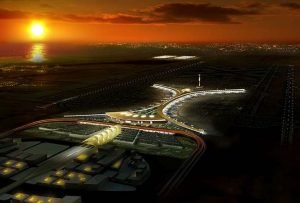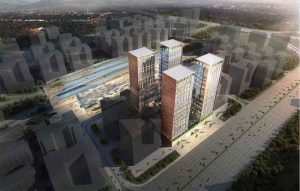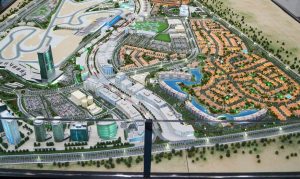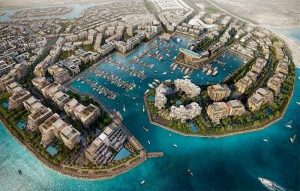Smart City Infrastructure
How Smart Cities and Communication Network Infrastructure Are Revolutionizing Urban Environments
The Transformational Shift
The world is experiencing an unprecedented transformation – a seismic shift towards urbanization. With 1.3 million people relocating to cities every week, it’s evident that the 21st century will be profoundly defined by the cityscape. As we hurtle towards 2040, an astonishing 65% of the world’s population will call cities their home. The significance of this urban revolution cannot be overstated. Let’s delve into the anatomy and importance of smart cities, the linchpin of this urban renaissance.
The Anatomy of a Smart City
- Technology Integration: At the heart of a smart city lies technology integration. Smart cities leverage the power of digital infrastructure to optimize services, enhance the quality of life, and promote economic growth. This involves the seamless connection of various systems, ranging from transportation and energy management to healthcare and public safety.
- Data-Driven Decision Making: Data is the lifeblood of a smart city. Sensors and IoT devices collect vast amounts of data, which is then analyzed to make informed decisions. This data-driven approach enhances efficiency, allowing for real-time responses to urban challenges, such as traffic congestion or environmental concerns.
- Sustainability: Smart cities prioritize sustainability by embracing green technologies. Renewable energy sources, waste management, and efficient public transportation systems are key components in reducing the environmental footprint and ensuring a high quality of life.
- Infrastructure Development: The physical infrastructure of a smart city is designed to cater to the ever-evolving needs of its inhabitants. This includes the development of advanced telecommunication, transportation networks, modernized healthcare facilities, and resilient, adaptable urban planning.
The Importance of Smart Cities
Economic Powerhouses: The world’s largest urban areas already contribute a substantial 60% of the global GDP. As cities grow larger and more prosperous, this figure is set to rise even higher. In the coming decades, experts predict that up to 80% of future economic growth in developing regions will be concentrated in cities. Smart cities are engines of economic prosperity, offering a multitude of opportunities for businesses, entrepreneurs, and workers alike.
Improved Quality of Life: Smart cities aim to enhance the well-being of their residents. Through the efficient delivery of services, including healthcare, transportation, and education, smart cities create environments where people can thrive. Reduced traffic congestion, better air quality, and improved public safety contribute to an overall higher quality of life.
Sustainability and Resilience: The importance of smart cities is underscored by their focus on sustainability. With the looming challenges of climate change, smart cities are at the forefront of developing green technologies and implementing sustainable practices. These efforts help reduce the environmental impact and ensure a sustainable future for generations to come.
Innovation Hubs: Smart cities serve as incubators for innovation. By fostering collaboration between government, businesses, and research institutions, these urban centers stimulate the creation of new technologies and solutions to address urban challenges. This innovation, in turn, creates new opportunities for economic growth and technological advancement.
Global Competitiveness: In an increasingly interconnected world, cities are vying for global competitiveness. Smart cities that offer a high quality of life, economic opportunities, and cutting-edge infrastructure are more likely to attract talent, investment, and international recognition.
Ready to shape the future of your city? Contact us for expert smart city consultancy.
Explore the limitless possibilities of tomorrow’s smart city – innovation, sustainability, and a brighter urban future!
Technology in a Smart City Design
1. Designing 5G Networks
The implementation of 5G networks is a major milestone in the development of smart cities. Fifth-generation wireless technology, or 5G, provides faster data transmission, lower latency, and the ability to connect a vast number of devices simultaneously. It enables innovations such as autonomous vehicles, IoT devices, and augmented reality applications, which are essential in building a smart city.
With 5G, cities can support a myriad of services, from smart traffic management and predictive maintenance of infrastructure to remote healthcare monitoring and enhanced public safety through real-time data sharing. The design of 5G networks involves strategically placing base stations and optimizing network architecture to ensure comprehensive coverage and reliable connectivity.
2. Radio Access Networks (RAN)
RAN, often considered the backbone of wireless communication, forms a crucial part of smart city infrastructure. It comprises the various components that connect user devices to the core network. Efficient RAN design is essential to deliver high-speed, low-latency, and uninterrupted connectivity to residents, businesses, and public services.
Furthermore, the deployment of open RAN, which utilizes open interfaces and software-defined networks, allows for greater flexibility, vendor diversity, and scalability, making it easier to adapt to the dynamic needs of a smart city.
3. Core Networks
Core networks are the central data processing and routing centers that manage all communication within a smart city. These networks are responsible for ensuring the efficient flow of data between various services, devices, and endpoints. Advanced core network design is essential for minimizing latency, securing data, and maintaining seamless connectivity.
4. Data Centers
Data centers are the storage and processing hubs where the massive amounts of data generated within a smart city are stored and analyzed. Efficient data center design is crucial for ensuring data security, scalability, and accessibility. Smart cities rely on data analytics to make informed decisions, optimize resource allocation, and enhance services like emergency response and traffic management.
5. Network Hubs
Network hubs serve as central points where different communication networks converge. These hubs facilitate data exchange and interconnectivity between various service providers and city departments. Properly designed network hubs enhance coordination among public services and private entities, fostering a more connected and responsive city ecosystem.
Driving Smart Governance, Transportation, and Public Safety
By combining innovative technologies with efficient communication network infrastructure, smart cities can realize numerous benefits, including:
1. Smart Governance: Smart city infrastructure empowers governments to monitor and manage urban services in real time. This enables better decision-making, resource allocation, and public service delivery. Citizens can also engage with their local government more effectively, promoting transparency and participation in the decision-making process.
2. Transportation: Smart cities use communication networks to optimize transportation systems. From traffic management and predictive maintenance to intelligent public transportation, these networks reduce congestion, lower emissions, and improve mobility. Additionally, autonomous vehicles and smart infrastructure enhance road safety and efficiency.
3. Public Safety: Communication networks enable faster and more effective emergency response. In a smart city, first responders can access real-time data and communicate seamlessly, improving their ability to save lives during accidents, natural disasters, or other emergencies.
4. Energy and Power Infrastructure: The integration of efficient energy and power infrastructure is a pivotal advantage for smart cities. This encompasses the planning and execution of energy systems within the smart city framework, guaranteeing the smooth assimilation of power generation, distribution, and energy management systems. The advantages encompass enhanced energy reliability, waste reduction, and the promotion of renewable energy sources. This approach actively contributes to the development of a more sustainable and energy-efficient urban environment, fostering both green initiatives and resilience.
Guiding Cities into Tomorrow:
AZURA Consultancy the Smart City Experts
Partner With Us
We specialize in crafting Smart Cities and Communication Network Infrastructure. Our expertise encompasses the design of 5G networks, RAN, core networks, data centers, and network hubs. We’re dedicated to creating innovative urban environments that enhance connectivity and efficiency, driving smart governance, transportation, and public safety. Let us help transform your city into a dynamic, connected hub for innovation and progress. In addition, we can also provide advisory and technical solutions on how to integrate industrial facilities and power and energy infrastructure within the smart city framework. Our holistic approach ensures maximum sustainability and energy savings, helping your city become a beacon of modern urban development.
Frequently Asked Questions About Smart Cities
Smart cities employ technologies like smart grids, energy-efficient buildings, and renewable energy sources to optimize energy use, reduce waste, and lower carbon emissions. Additionally, data analytics help identify energy-saving opportunities and demand-response strategies.
Smart cities can enhance quality of life by improving access to services, reducing congestion, enhancing safety, promoting sustainability, and fostering community engagement and inclusion.
Equity in smart cities requires addressing digital divides, ensuring access to technology and services for all socioeconomic groups, actively involving communities in decision-making, and implementing policies to prevent discrimination and inequality.
Privacy concerns in smart cities relate to the collection, storage, and use of personal data from various sensors and devices. Safeguards such as anonymization, data encryption, and transparent data policies are essential to protect citizen privacy.
Smart cities must implement robust cybersecurity measures to protect against threats such as hacking, data breaches, and infrastructure attacks. This includes encryption, network monitoring, access controls, and regular security audits.
Smart city development may be funded through a combination of public and private investments, grants, partnerships, and innovative financing mechanisms. Governments, businesses, and residents all have roles in contributing to the costs.










